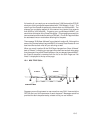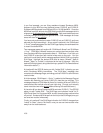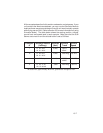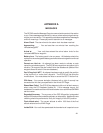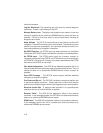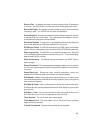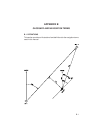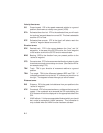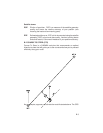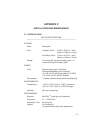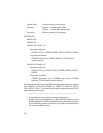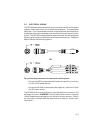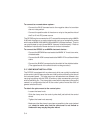B-2
Velocity/time terms:
GS Ground speed. GS is the speed measured relative to a ground
position; also known as velocity over ground (VOG).
ETA Estimated time of arrival. ETA is the estimated time you will reach
the “active to” waypoint based on current GS. This time is selectable
as either UTC or local.
ETE Estimated time enroute. ETE is the time it will take to reach the
“active to” waypoint based on current GS.
Direction terms:
DTK Desired track. DTK is the course between the “from” and “to”
waypoints. In the case of the GOTO function, the “from” waypoint
is the location at which the GOTO function was activated.
BRG Bearing. BRG is the direction from your present position to the
“active to” waypoint.
CTS Course to steer. CTS is the recommended direction to steer in order
to reduce cross track error and stay on course. (See Section B.2 for
an example using CTS.)
TRK Track. TRK is your direction of movement relative to a ground
position.
TRN Turn angle. TRN is the difference between BRG and TRK. “L”
indicates you should turn to the left, “R” indicate you should turn to
the right. The degrees indicate the angle you are off course.
Distance terms:
DIS Distance. DIS is the great circle distance from your position to the
“active to” waypoint.
XTK Crosstrack. XTK is the cross track error, or distance that you are off
course. If the crosstrack error exceeds the CDI scale setting, the
XTK distance will also be displayed on the appropriate side of the
CDI.
V VNAV altitude. V is the recommended altitude at which you should
be in order to accomplish a VNAV maneuver. This information is
only available when the VNAV function has been activated.



